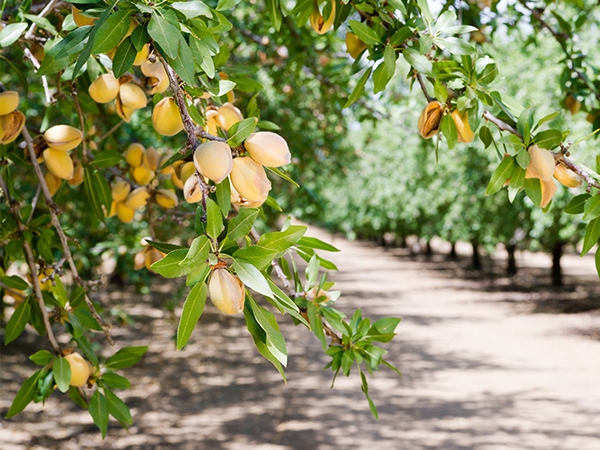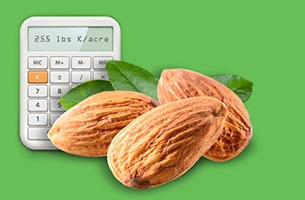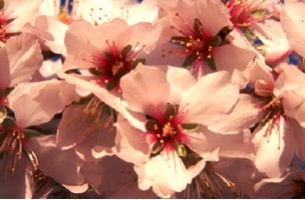Why is Leaf Tissue Sampling Necessary in Almonds?
Determining the amount of potassium (K) fertilizer to purchase and apply is an important decision for almond growers. The basis for this decision is to ensure and maintain proper K levels in the soil. Once trees have a deficiency, it can take years to rebuild K concentrations.
To calculate how much fertilizer you should apply for next season, you need two sources of information:
- Leaf tissue analysis taken at 139-147 days after full bloom (typically in mid-July during cracking)
- Estimated amount of nutrients removed at harvest
Why leaf sampling is necessary
The nut harvest removal rate is a good indicator of how much K was used last season. Those numbers are used to calculate the rate of replenishment for next season. Different factors, such as water availability, affect crop uptake and depletion throughout the season. Demand for nutrients also increases as almond trees age and grow in size.1 Through leaf tissue analysis, growers can better gauge nutrient uptake and demand from season to season.
When to take leaf samples for K replenishment

By taking leaf samples in July, you can get an accurate snapshot of the tree’s nutrient status, which will guide your upcoming replenishment strategy.
Although taking leaf samples earlier in the spring is helpful to diagnose or prevent mid-season deficiencies, growers should not base their K fertilizer applications on spring tissue tests alone.
The Almond Doctor explains:
Sampling in spring time, during periods of active growth can be misleading due to the variability of true nutrient usage. Research has shown that the tree during this period is transferring large amounts of nutrients from source to sink, and may be devoting more nutrients to new growth instead of developed foliage, thus providing inaccurate data.
How to calculate nut harvest removal rate
It is estimated that almonds remove 90 lbs. of K2O with every 1,000 lbs. of nuts produced. Translating that to pounds of actual fertilizer needed for replenishment can be tricky, so Compass Minerals has made it easy through our online Almond Calculator.
How leaf analysis and harvest removal rates work together
Bringing these two sources of information together is how almond growers can make sound agronomic decisions. Here are 4 tips to keep in mind during tissue sampling:
- Pick fully expanded leaves from non-fruiting spurs on branches at least 6 feet high.
- Pick from at least 20 trees of the same variety, age and rootstock.
- Pull 100 leaves for each sample.
- Use a regular pattern across the block, with at least 100 feet between trees you pull from.*
- Label leaves with sampling locations.
- Keep samples cool until they are sent to the analytical lab.
- Send the samples to a reputable lab (check with your PCA) and ask for a full nutrient analysis.
Don't forget to use our free Almond Calculator to determine the rate of Protassium+ that you should apply to replenish K once you receive the results to your tissue tests.
- If the K levels in your tissue analysis are adequate, use the maintenance rate.
- If your leaf tissue tests show a K deficiency, increase the rate. Consult your PCA.
1Doll, David. “Mid-July Leaf Sampling for Almonds.”




